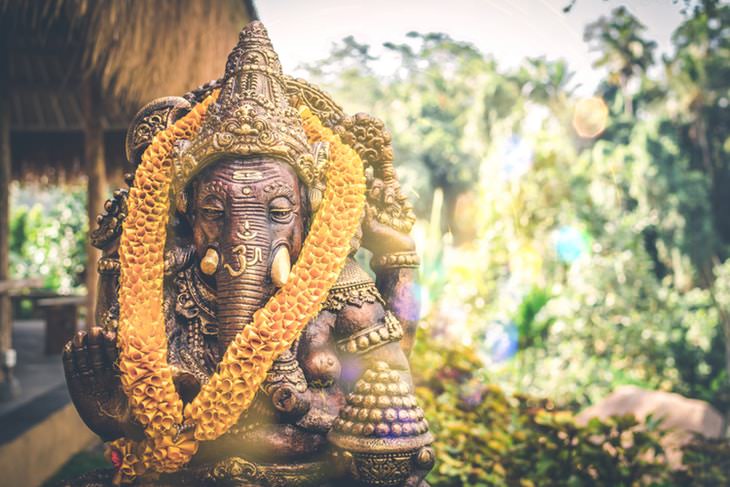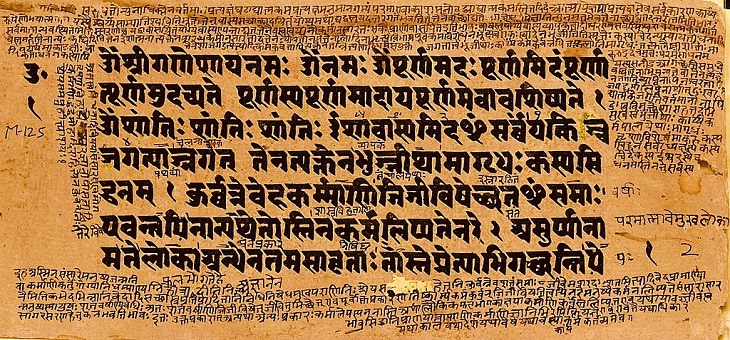A Brief History of Sanskrit
Similarly to how European languages cannot help but use Latin or Greek terms to this day, and how many of the words we use in English (or French, Romanian or German, you name it) have descended from Greek or Latin terms, many modern Indian languages, such as Malayalam, Kannada and Telugu heavily rely on Sanskrit to this day, with some estimating that over 50% of their vocabulary is derived from Sanskrit.
Apart from that, Sanskrit had a profound influence on Buddhism and Jainism, since many of their prominent religious texts were written in this ancient language. But Sanskrit isn’t only the language of ancient religious texts and science, as even today, the language is often taught at schools, and Indian periodicals and books are written in Sanskrit. There is even a village in India called Karnataka where the inhabitants speak Sanskrit.
Truth be told, however, the modern iteration of the language is very different from the truly archaic Vedic Sanskrit, which only highlights how ancient and rich this language truly is. Speaking of age, the estimated derivation of Sanskrit into a language of its own is estimated at 2.000 BC, and for almost a millennium, the language was suggested to be orally preserved.
 By 6 century BC, this older version of Sanskrit called Vedic Sanskrit evolved into the more modern version of the language used and spoken to this day, Classical Sanskrit. The two languages are very different, so much so that translating texts in Vedic Sanskrit proved to be challenging. As for the texts themselves, they were written in a variety of regional scripts throughout history, all of which are derived from the liturgical Brahmi script.
By 6 century BC, this older version of Sanskrit called Vedic Sanskrit evolved into the more modern version of the language used and spoken to this day, Classical Sanskrit. The two languages are very different, so much so that translating texts in Vedic Sanskrit proved to be challenging. As for the texts themselves, they were written in a variety of regional scripts throughout history, all of which are derived from the liturgical Brahmi script.By far the most popular and canonical script, however, is Devanagari, an illustration of which you can see in the short introductory video to Classical Sanskrit below. The video illustrates how the language sounds and gives you several examples of words and stories in Sanskrit.
How are English and Sanskrit Related?
Now that you got a very brief background in Sanskrit, a natural question you might ask is, how can this language that’s so different, distant and ancient possibly be related to English? But if we take a closer look and try to compare these two languages, you will surely be surprised to find a startling resemblance, so let's do just that and compare a few examples of words in English, Old English, Latin, and Sanskrit.
We compared not only English and Sanskrit but also these 2 older and closer “relatives” of modern English (Latin and Old English) to see a clearer progression of word forms. Since Sanskrit is an old language, it's simply more useful to compare it with other old languages to find more similarities.
We're sure you will agree that the resemblance of all these words cannot be left unnoticed, especially if we take into account that "t", "th" and "d" are basically interchangeable sounds, as in "mother" and "matriarch", or "two" and "double". This truly uncanny resemblance between Sanskrit and European languages, such as English, was first noticed during the colonial era when European scholars first started studying Sanskrit. One of these scholars was Sir William Jones, who in 1786 wrote the following about Sanskrit:
“The Sanscrit language, whatever be its antiquity, is of a wonderful structure; more perfect than the Greek, more copious than the Latin, and more exquisitely refined than either, yet bearing to both of them a stronger affinity, both in the roots of verbs and the forms of grammar, than could possibly have been produced by accident; so strong indeed, that no philologer could examine them all three, without believing them to have sprung from some common source, which, perhaps, no longer exists. There is a similar reason, though not quite so forcible, for supposing that both the Gothick and the Celtick [sic], though blended with a very different idiom, had the same origin with the Sanscrit; and the Old Persian might be added to the same family.”
After centuries of research in historical linguistics, also called philology, scholars managed to confirm Jones’ and many others' assumption, and we now know that Sanskrit and many modern European languages, as well as Middle Eastern languages, are all descendants of one “mother language” that existed around 6.000 years ago called Proto-Indo-European.
Meticulous work was conducted to reconstruct this archaic language, and Sanskrit as the oldest recorded language from this family largely enabled these efforts. As for the people who spoke this ancient language, the Proto Indo Europeans, we sadly don’t know much about who they were or how they called themselves, but historians trace their origins to the area of modern-day southern Ukraine and Russia.
We also know that they were likely among the first people to domesticate horses, which gave them the advantage of traveling faster and further than ever before, allowing them to travel and colonize vast territories spanning from northern Europe to India, and, of course, to spread their language.
Thousands of years later, these ancient people and their language evolved into a multitude of nationalities and languages, with an estimated 46% of the world population today speaking an Indo-European language. Learn more about the Proto Indo European language and its speakers in the fascinating lecture below.
Bonus! Who Were the Indo Europeans?




